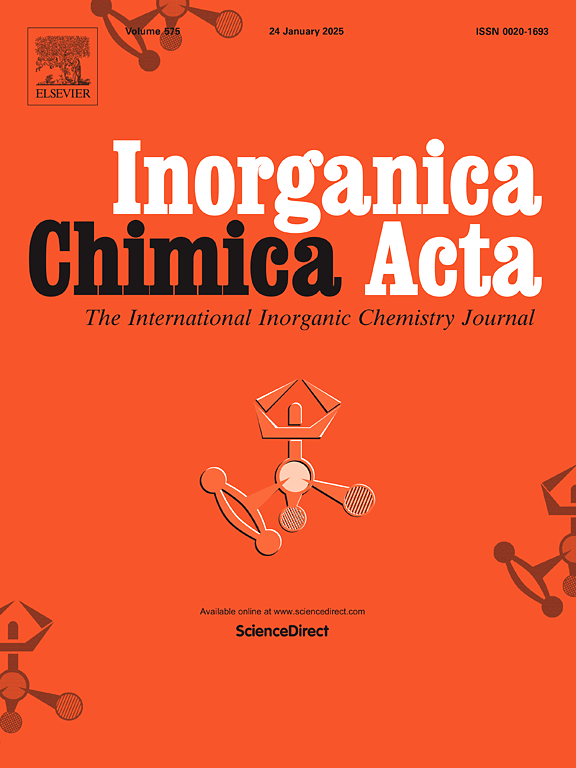Biogenic synthesis of zinc oxide nanoparticles mediated by the extract of Simarouba glauca leaf and its multifaceted applications
IF 3.2
3区 化学
Q2 CHEMISTRY, INORGANIC & NUCLEAR
引用次数: 0
Abstract
Zinc oxide nanoparticles (ZnO NPs) are biosynthesized using aqueous leaf extract of Simarouba glauca DC. Proper characterization of these NPs is achieved through various state-of-the-art techniques. The UV–vis spectrum exhibits a characteristic peak at 364 nm, confirming ZnO NPs with a bandgap of 3.59 eV. FTIR analysis reveals the presence of Simarouba glauca DC. (S. glauca) biocomponents on ZnO NPs surface. XRD analysis suggests the formation of highly crystalline and pure hexagonal phase with an average crystallite size of 23 nm. FESEM image analysis emphasizes NPs to be hexagonal shape with little agglomeration. Moreover, the HRTEM image determines the average particle size of 49.44 nm which is derived from the particle size distributions, and an interplanar spacing of 0.248 nm. DLS analysis unveils the monodispersity of ZnO NPs with an average particle size of ∼56.84 nm, which is quite more than the particle size achieved from HRTEM and XRD analysis. The zeta potential of NPs is −13.24 mV, indicating its rational stability. These NPs exhibit higher photodegradation activity against methylene blue (80%) and rhodamine B (82%) under sunlight irradiation. The degradation paths of MB dye are identified through liquid chromatography-mass spectrometry (LC-MS) analysis. To explore its multidimensional applications in the field of medicine, NPs show potential antibacterial activity against a wide range of clinical gram-positive and gram-negative pathogenic bacterial strains. Furthermore, the anticancer activity of ZnO NPs is evaluated by SRB assay against A-549, HeLa, and PC3 cancer cells. Our findings elicit the therapeutic talents of the synthesized ZnO NPs.

樗叶提取物介导的纳米氧化锌的生物合成及其多方面应用
以青叶水提物为原料,生物合成氧化锌纳米颗粒。这些NPs的适当表征是通过各种最先进的技术实现的。紫外可见光谱在364 nm处有一个特征峰,证实ZnO NPs的带隙为3.59 eV。FTIR分析揭示了simmarouba glauca DC的存在。(S. glauca)在ZnO NPs表面的生物组分。XRD分析表明,形成了高结晶的纯六方相,平均晶粒尺寸为23 nm。FESEM图像分析强调NPs为六边形,结块较少。HRTEM图像确定了粒径分布的平均粒径为49.44 nm,面间距为0.248 nm。DLS分析揭示了ZnO NPs的单分散性,平均粒径为~ 56.84 nm,比HRTEM和XRD分析得到的粒径大得多。NPs的zeta电位为- 13.24 mV,具有较好的稳定性。这些NPs在日光照射下对亚甲蓝(80%)和罗丹明B(82%)具有较高的光降解活性。通过液相色谱-质谱分析确定了MB染料的降解途径。为了探索其在医学领域的多维应用,NPs对广泛的临床革兰氏阳性和革兰氏阴性致病菌菌株显示出潜在的抗菌活性。此外,通过SRB实验评估了ZnO NPs对A-549、HeLa和PC3癌细胞的抗癌活性。我们的发现引出了合成的ZnO NPs的治疗才能。
本文章由计算机程序翻译,如有差异,请以英文原文为准。
求助全文
约1分钟内获得全文
求助全文
来源期刊

Inorganica Chimica Acta
化学-无机化学与核化学
CiteScore
6.00
自引率
3.60%
发文量
440
审稿时长
35 days
期刊介绍:
Inorganica Chimica Acta is an established international forum for all aspects of advanced Inorganic Chemistry. Original papers of high scientific level and interest are published in the form of Articles and Reviews.
Topics covered include:
• chemistry of the main group elements and the d- and f-block metals, including the synthesis, characterization and reactivity of coordination, organometallic, biomimetic, supramolecular coordination compounds, including associated computational studies;
• synthesis, physico-chemical properties, applications of molecule-based nano-scaled clusters and nanomaterials designed using the principles of coordination chemistry, as well as coordination polymers (CPs), metal-organic frameworks (MOFs), metal-organic polyhedra (MPOs);
• reaction mechanisms and physico-chemical investigations computational studies of metalloenzymes and their models;
• applications of inorganic compounds, metallodrugs and molecule-based materials.
Papers composed primarily of structural reports will typically not be considered for publication.
 求助内容:
求助内容: 应助结果提醒方式:
应助结果提醒方式:


